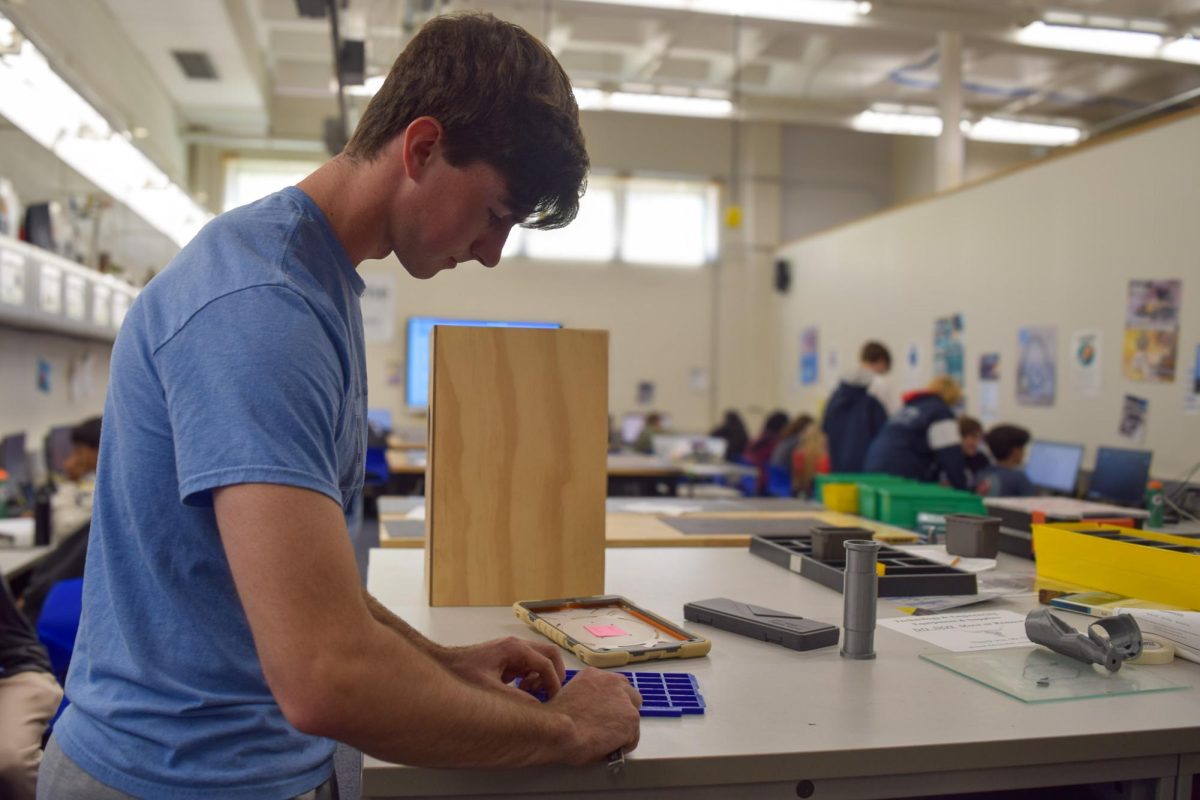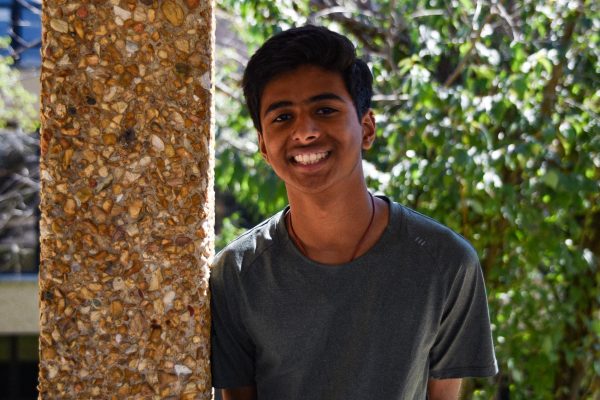For junior David Hawiger, summer was not just relaxing and travel but also time to answer his question: Is a medical career for me?
Hawiger pursued an internship opportunity at the St. Louis University School of Medicine which included two weeks of laboratory research and one week shadowing an internal medicine physician at the hospital. He spent the first two weeks at the Pharmacology and Physiology lab directed by professor Daniela Salvemini. Research at the lab focused on a translational bench-to-bedside approach toward discovering novel analgesics through rodent antibodies and receptors. Postdoctoral Associate Research Professor Timothy Doyle mentored and worked with Hawiger in the lab.
“It was amazing to see lab research translate quickly to produce more meaningful and applicable results that directly benefit human health — in this case, pain relief for patients suffering from chronic pain,” Hawiger said.
Hawiger performed Polymerase Chain Reaction (PCR) assays and Western Blot tests to find out how much protein was in a sample collected from genetically cloned mice injected with specific chemicals. The research focused on imaging and studying a protein called G-Protein Coupled Receptor (GPCRs), along with its ligand CARTp, to see what happened to the proteins and what types of proteins bring about specific changes concerning pain.
“Researching which specific protein molecule would pair up with the GPCR to promote a certain action such as lowering pain, upping your pain tolerance and several other results would give us insights into better management of chronic pain,” Hawiger said. “It is striking to see how powerful lab research is in providing new and better solutions to our problems.”
Though the terminology and concepts were new, Hawiger felt comfortable with the research work and the science because he connected his new learning to his prior knowledge of cells, proteins and receptors from school courses.
“[Biology teacher Sally] Steininger helped build the fundamentals for this experience. Studying biology opened my eyes to multiple mechanisms that simultaneously occur in our body every second, and it got me interested. Although there are no prerequisites, I would recommend people to take Honors Biology and Chemistry if they are interested in doing something like this [medical internship],” Hawiger said.
After two weeks of research, Hawiger shadowed professor Chad Miller with the Department of Internal Medicine at St. Louis University Hospital. During his weeks of shadowing, he followed the medical team that took care of patients on the medical floor and had the opportunity to round on the patients every day.
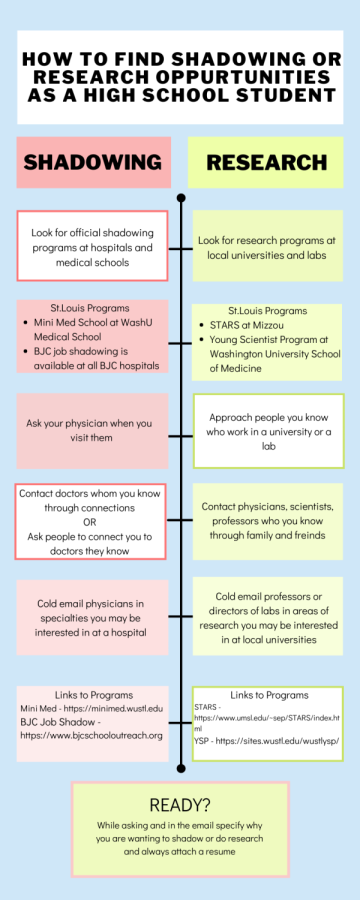
“Shadowing was cool because you see real patients,” Hawiger said. “We are used to seeing doctors in their offices, but I learned
that their role continues beyond the clinic when one falls severely ill and needs to be admitted to the hospital.”
The medical team at the hospital included medical students, residents, fellows and the attending or the professor. Medical students and residents carried their patients. During rounds, they would present information about their patients to the professor.
“They would present the patient’s current problems, past medical history, what they think the diagnosis is and what they want to do next, like do a test or give a specific medication. There were a lot of back-and-forth discussions, and the professor gave his opinion. The next day you follow up on the tests and how the treatment went,” Hawiger said. “Figuring out what the disease was felt like solving an intellectual puzzle, which all of them seem to enjoy.”
According to Hawiger, doctors continue to read journals and keep themselves updated. Additionally, as physicians, they took care of issues beyond medical care.
“Interestingly, patient care sometimes addressed issues like patients wanting more food, issues with caregivers, planning for discharge and discussing with family members. [Doctors] seem to wear several hats to care for one’s health. Despite their busy schedule, they were welcoming of my questions and always took time to answer them. Although it felt like [the shadowing] was over too fast, it was pretty fun,” Hawiger said. “The rich human interaction and helping people feel better is a fulfilling experience.”
It took Hawiger several months to get this research opportunity. When Hawiger recognized his interest in the medical field, he decided that it would be best if he got to learn more about how the field works in person.
“It was not easy; there was a lot of back-and-forths emailing and waiting. There’s no set way to do it. You have to be around, talk to people and email a lot. I feel it’s just knowing people, getting those connections and letting them know of your interests.”
Hawiger said.
Since the program was during summer, Hawiger did not have to focus on school or sports in addition to the program.
“Summer is the best time to pursue such opportunities. Getting a first-hand look at any field you are interested in is the way to go instead of relying on what we hear from others. Get connections, and talk to people. The more people you talk to, the bigger the connections you have, and you open more opportunities for yourself,” Hawiger said. “[The program] helped me; I wasn’t split anymore on what I wanted to do. Being a doctor, it’s pretty cool. Seeing patients in the hospital get better was inspiring, and then seeing lab research eventually help people was amazing. It was beyond fun.”


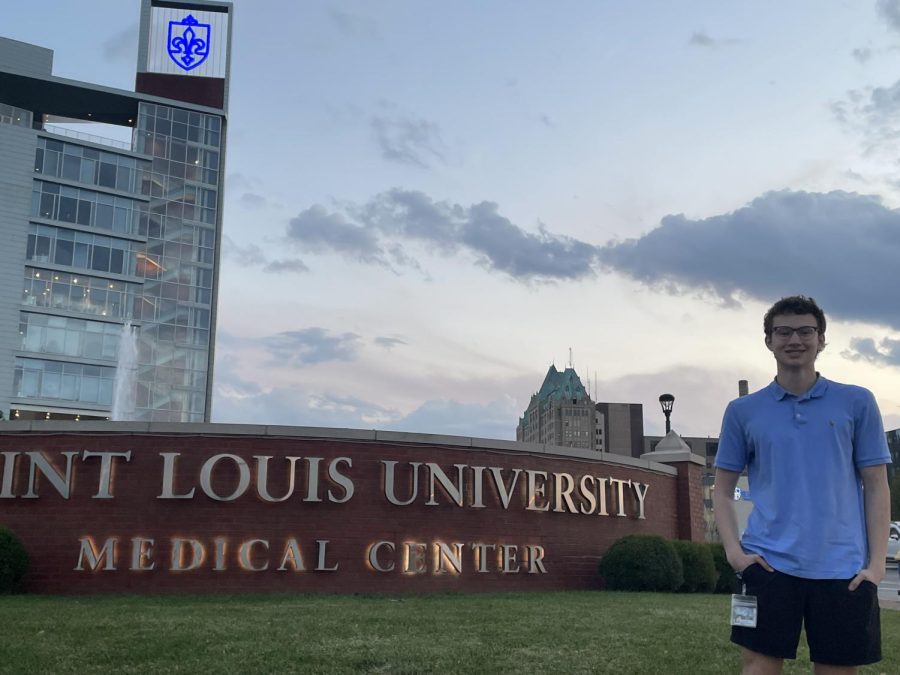
![Focused on providing exceptional service, sophomore Darsh Mahapatra carefully cleans the door of a customer’s car. Mahapatra has always believed his customers deserve nothing less than the best. “[If] they’re trusting us with their car and our service, then I am convinced that they deserve our 100 percent effort and beyond,” Mahapatra said.](https://pwestpathfinder.com/wp-content/uploads/2025/10/DSC_0018-1200x800.jpg)
![Sophomore Aleix Pi de Cabanyes Navarro (left) finishes up a soccer game while junior Ava Muench (right) warms up for cross country practice. The two came to Parkway West High School as exchange students for the 2025-2026 school year. “The goal for the [exchange] program is to provide opportunities for both Parkway students and our international exchange students to learn about other cultures, build connections and become confident, capable, curious and caring — Parkway’s Four C’s — in the process,” Exchange Program Lead Lauren Farrelly said.](https://pwestpathfinder.com/wp-content/uploads/2025/10/Feature-Photo-1200x800.png)

![Gazing across the stage, sophomore Alexis Monteleone performs in the school theater. The Monteleone family’s band “Monte and the Machine” has been releasing music since 2012, but Alexis started her own solo career in 2024 with the release of her first single, Crying Skies. “My whole family is very musical, [and I especially] love writing [songs with them],” Monteleone said.](https://pwestpathfinder.com/wp-content/uploads/2025/09/DSC7463-1200x798.jpg)
![Amid teaching a lesson to her AP Calculus BC class, Kristin Judd jokes alongside her students in their funny remarks. Judd has always enjoyed keeping the mood light in her classroom, along with on the volleyball court. “[I enjoy] that side talk where you see [or] overhear a conversation and chime in, or somebody says something funny,” Judd said.](https://pwestpathfinder.com/wp-content/uploads/2025/09/image-1200x730.jpg)
![Eyeing the ball, junior Ella McNeal poses for her commitment pictures at Clemson University. McNeal’s commitment comes after months of contact with top Division 1 soccer programs. “ It has taken a lot to get to where I am, but I know that [what] I've already been through is just the beginning, and I can't wait for what is to come,” McNeal said.](https://pwestpathfinder.com/wp-content/uploads/2025/09/IMG_4926-1200x900.jpeg)

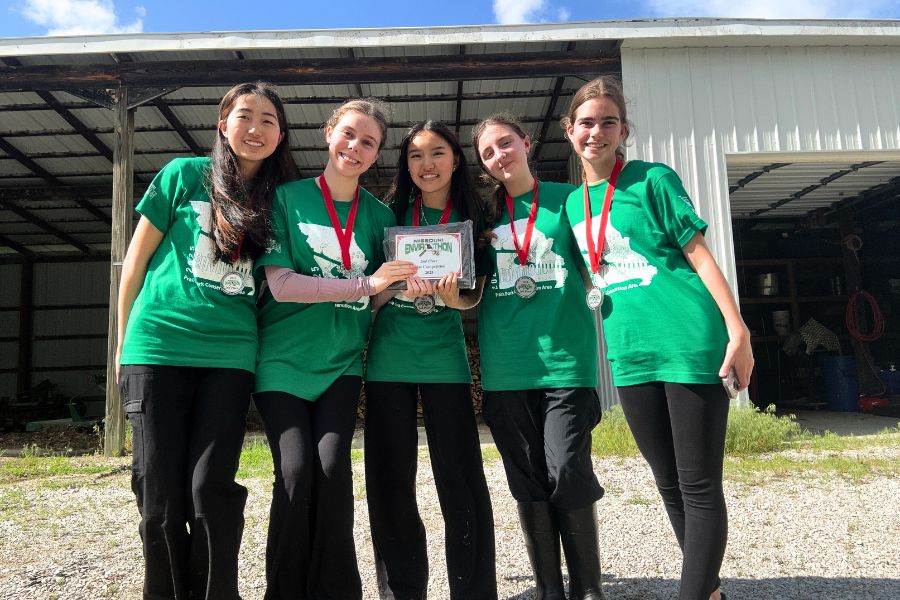
![Senior Adam Zerega stands with senior Dexter Brooks by farm equipment. Zerega often worked with friends and family on his farm. “I've been able to go to my family's farm since I was born. I [spend] at least three weekends a month [on the farm], so I'm there all the time,” Zerega said.](https://pwestpathfinder.com/wp-content/uploads/2025/04/IMG_4872-1200x900.jpg)
